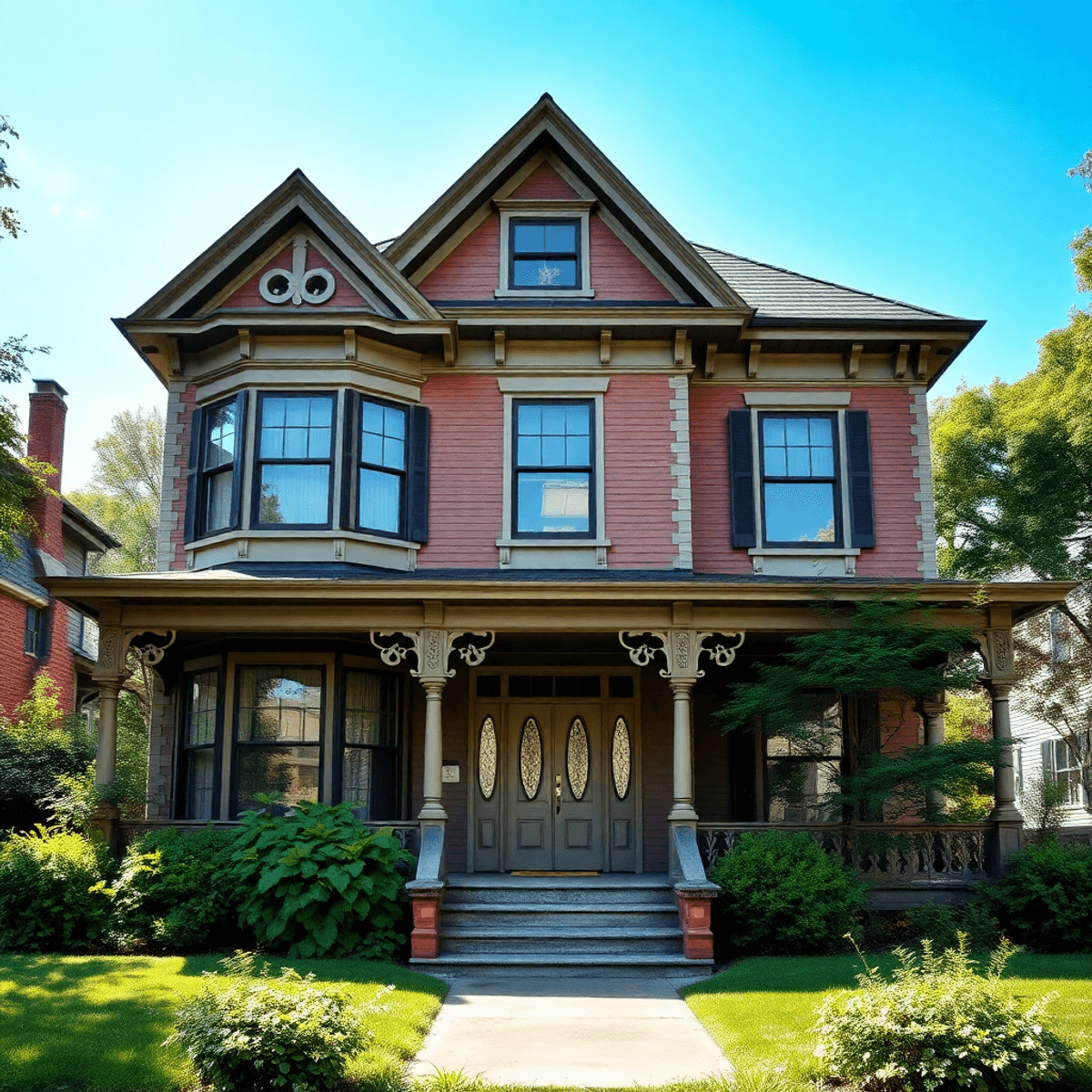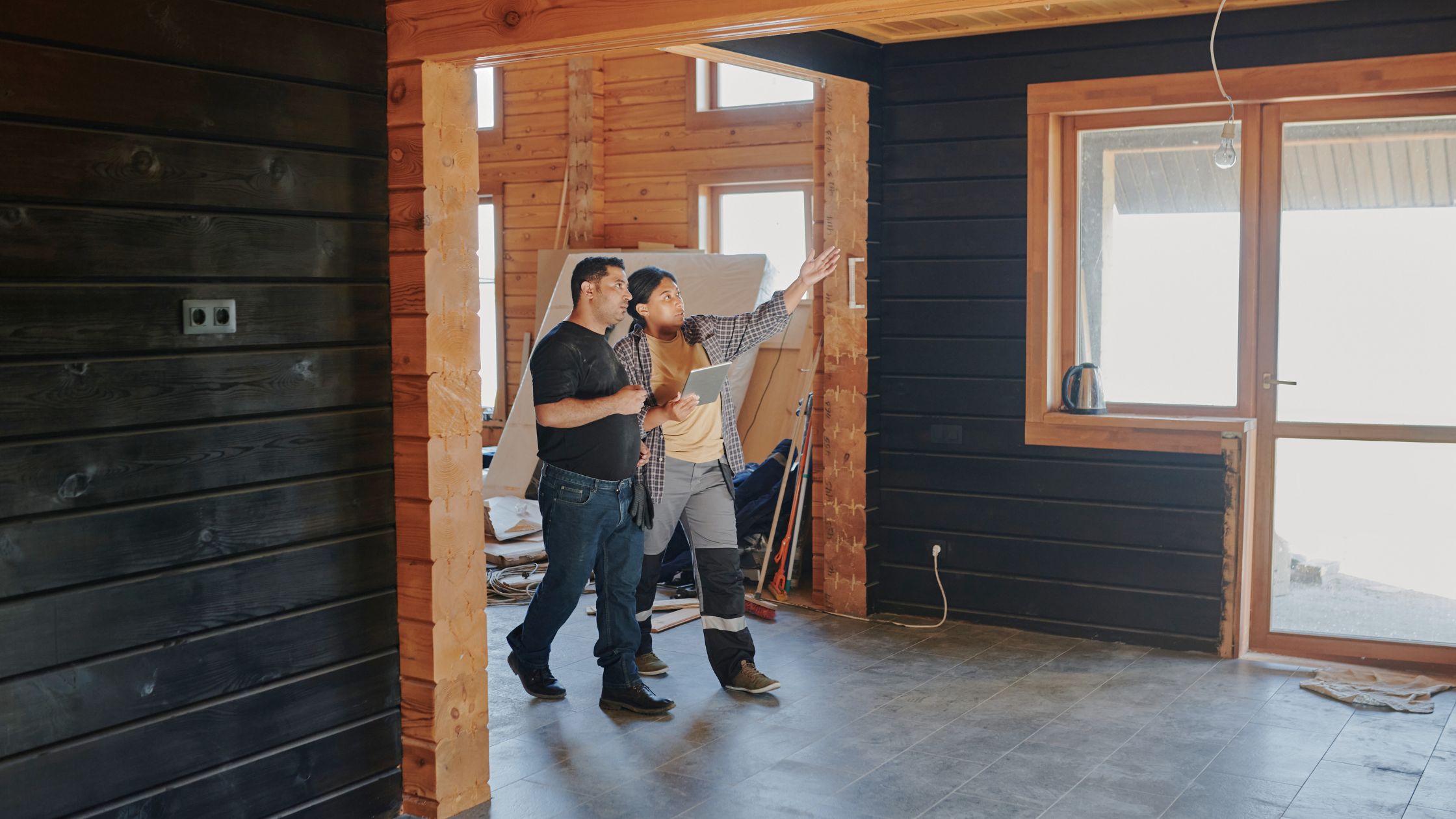Preserving History: A Guide to Remodeling Illinois Historic Homes Responsibly
Historic homes across Illinois are a testament to the state’s rich architectural and cultural heritage. Preserving these structures goes beyond aesthetics—it’s about maintaining a sense of place, honoring community history, and safeguarding unique craftsmanship that modern construction rarely replicates. Every Queen Anne, Italianate, or Prairie School home tells a story worth protecting for future generations.
Remodeling historic homes responsibly in Illinois brings its own set of challenges:
- Navigating local preservation laws and zoning requirements
- Balancing the need for modern amenities with respect for original design
- Finding skilled craftspeople and sourcing authentic materials
However, with the right approach and resources, these challenges can be overcome. For instance, budgeting your Lake County remodel effectively can help manage costs while still respecting the historical integrity of the home. Additionally, it’s crucial to choose the best materials for your Illinois renovation to ensure that any updates blend seamlessly with the original structure.
Preserving History: A Guide to Remodeling Illinois Historic Homes Responsibly provides homeowners with clear steps for undertaking renovations while upholding historical integrity. This guide focuses on helping you:
- Understand the significance of your property
- Comply with local preservation standards
- Make informed decisions about materials, techniques, and design
The key takeaway: Responsible remodeling isn’t just possible—it’s practical. By following established guidelines, you can update your Illinois historic home to meet today’s needs while celebrating its past. The process demands care and diligence, but it leads to results that honor both heritage and personal comfort.
For those considering specific renovations like a bathroom remodel in Lindenhurst or a screen house project in Gurnee, seeking professional help can make a significant difference. Furthermore, if you’re dealing with any insurance work related to remodeling, it’s important to have reliable services that understand both the renovation process and insurance requirements.
The Significance of Illinois Historic Homes
Illinois historic homes showcase a wide range of architectural heritage, reflecting the state’s diverse history and cultural evolution. Common styles include:
- Italianate: Marked by tall, narrow windows and decorative brackets under wide eaves, frequently found in cities like Springfield and Chicago.
- Queen Anne: Notable for their asymmetrical facades, ornate woodwork, and vibrant color schemes, these homes stand out in older neighborhoods throughout Illinois.
- Prairie School: Popularized by architects such as Frank Lloyd Wright, these feature horizontal lines and open interior spaces—an iconic contribution from Illinois to American architecture.
- Colonial Revival and Tudor Revival: These styles emphasize symmetry, classical detailing, or medieval-inspired elements that often signal early 20th-century construction.
Why Preserving Historic Homes Matters
Preserving these homes goes beyond aesthetics. Historic properties anchor neighborhoods, providing a tangible sense of place and continuity. They foster pride among residents and serve as educational resources for community members and visitors interested in architectural heritage Illinois.
However, maintaining the interiors of these historic homes can pose challenges. For instance, keeping the kitchen counter neat and clean can be a daunting task amidst renovation efforts. Here are some tips that might help streamline this process. Moreover, as we strive to preserve these homes’ historical essence, we must also ensure that modern necessities like storage are addressed efficiently. If you’re running out of storage options in your bathroom or kitchen while remodeling these historic properties, consider exploring some smart bathroom storage ideas to maximize your bath space.
Protecting Our Heritage
Historic districts and landmark designations function as protective measures. Through local commissions and city ordinances, these safeguards help maintain original character while mitigating unsympathetic alterations or demolitions. This collective effort ensures that the cultural significance historic properties possess remains intact for generations to come.
Key Local Preservation Bodies and Their Roles
Preserving historic homes in Illinois involves oversight from several key organizations, each with distinct responsibilities:
Edwardsville Historic Preservation Commission
Established in 1977, the Edwardsville Historic Preservation Commission safeguards the city’s architectural heritage. Responsibilities include reviewing:
- Demolitions (whole or partial)
- New construction within historic districts
- Building variances and proposed additions or alterations
The commission ensures that updates remain compatible with the original character of landmark properties and streetscapes. In addition to regulatory functions, it organizes heritage events and educates the public about local history.
Chicago Department of Planning and Development Historic Preservation Division
The Chicago Department of Planning and Development (DPD) Historic Preservation Division manages a comprehensive preservation program for one of the nation’s richest collections of historic architecture. Core functions:
- Researching and preparing reports for landmark designation
- Reviewing permit applications for changes to designated landmarks or buildings in historic districts
- Enforcing demolition delay ordinances to prevent loss of significant structures before full review
- Promoting preservation through technical assistance, tax incentives, public outreach, and special initiatives such as the Black Chicago Heritage Initiative
Wheaton City Historic Commission
The Wheaton Historic Commission operates the Register of Historic Places Program. Criteria for listing include:
- Architectural quality or uniqueness
- Historical significance
- Association with notable people or events
- Minimum age requirements
Property owners interested in this recognition research their home’s history and submit documentation for review. Approved properties are listed on an interactive map, increasing visibility and community pride.
Each body plays a critical role in shaping responsible remodeling practices across Illinois communities, setting clear expectations for homeowners while protecting local heritage. Homeowners considering renovations should consult these bodies to ensure compliance with local preservation guidelines. For instance, if you’re planning a finished basement project or looking into design and planning aspects, it’s essential to understand how these changes might affect the historical integrity of your property. Moreover, when it comes to flooring options, vinyl flooring could be a stylish and practical choice for such spaces.
Guidelines for Responsible Remodeling in Illinois Historic Homes
Strict remodeling guidelines for historic homes in Illinois exist to protect the character and authenticity of heritage properties. Adhering to commission standards preserves not only architectural details but also the cultural identity of local neighborhoods.
Why Local Guidelines Matter
Commission-approved standards ensure that any changes—whether exterior alterations, additions, or repairs—maintain historical accuracy and community character. Disregarding these rules can result in loss of landmark status or even legal penalties.
Review Process and Documentation
When proposing remodels, homeowners typically must:
- Submit detailed plans showing both existing and proposed conditions.
- Provide research documentation that verifies original features, such as historic photographs, blueprints, or city records.
- Explain how new work will match or complement the home’s architectural style.
Review boards use this information to assess whether the project meets preservation standards Illinois requires.
Acceptable vs. Incompatible Changes
Acceptable alterations often include:
- Restoration using matching materials (e.g., wood siding replaced with same species and profile).
- Updates to mechanical systems if done discreetly (e.g., HVAC units hidden from street view).
However, if you’re considering a more extensive project like a kitchen remodel, it’s crucial to find a local expert kitchen remodeling contractor in Wauconda who understands these guidelines and can help you navigate them effectively.
Incompatible changes typically involve:
- Vinyl window replacement on a Victorian façade when original wood windows could be repaired.
- Additions that disrupt scale, massing, or setback lines established by the original design.
Following these remodeling guidelines historic homes Illinois ensures each renovation respects both individual property value and shared community heritage. This respect for history should also extend to any outdoor living projects. For instance, when creating a backyard oasis in Illinois, it’s essential to adhere to local trends and guidelines. You can explore some outdoor living trends for creating a backyard oasis in Illinois to ensure your project aligns with community standards while enhancing your property’s value. Keeping the spirit of “Preserving History: A Guide to Remodeling Illinois Historic Homes Responsibly” at its core is vital.
Researching Your Home’s History Before Remodeling
Thorough research is the foundation for responsible remodeling in Illinois. Understanding your historic property’s origins, architectural evolution, and previous alterations ensures any changes respect its unique story.
Effective Steps for Researching Historic Home History in Illinois
- Visit local archives and historical societies to access old maps, building permits, and property records.
- Consult city or county preservation offices, which often maintain files on landmarked homes or historic districts.
- Explore public libraries for vintage photographs, city directories, newspapers, and architectural survey books.
- Interview longtime neighbors or previous owners who might provide insight into undocumented changes.
Detailed documentation—such as original blueprints, photographs of architectural features, or written histories—serves as valuable evidence when submitting permit applications. Local commissions often require this level of detail to assess how proposed renovations will impact the home’s character. Accurate records demonstrate your commitment to preserving authenticity and streamline the approval process.
Illinois homeowners have shared success stories about discovering hidden transom windows behind drywall or original hardwood beneath carpeting—all uncovered through property history research. These findings not only influenced restoration plans but also strengthened project proposals by highlighting a dedication to retaining period details.
Meticulous documentation and historical research become essential tools that shape both restoration strategies and commission evaluations. This approach builds a strong case for responsible remodeling while honoring the integrity of Illinois’ historic homes.
Remodeling Ideas
With a solid understanding of your home’s history, you can make informed decisions about remodeling. For instance:
- If you’re considering expanding your living space, you might want to explore second-story addition vs main-floor expansion options that could suit your Lake County home.
- Alternatively, if you’re looking to enhance outdoor living spaces, deciding between a screened porch and sunroom could be beneficial.
- Should you wish to optimize storage in your historic home while maintaining its charm, consider these smart storage ideas for every room.
- Lastly, if your basement needs an upgrade, there are effective strategies on how to make an old Illinois basement look new and modern that can transform it into a functional part of your home.
Using Appropriate Materials and Techniques in Renovation
Selecting restoration materials for historic homes demands attention to detail and respect for the original craftsmanship. Matching wood types, such as old-growth oak or heart pine, ensures replacement siding or trim blends seamlessly with existing elements. For masonry, sourcing bricks and mortar with similar composition and color to the originals helps maintain architectural integrity. Salvaged materials from architectural salvage yards often provide an authentic match that new products can’t replicate.
Traditional building techniques in Illinois—such as lime-based plaster, hand-cut stonework, or mortise-and-tenon joinery—should be retained whenever feasible. Skilled tradespeople familiar with these methods bring a level of authenticity that modern shortcuts often lack. Sustainable preservation methods come into play by reusing original materials where possible and incorporating energy-efficient upgrades discreetly, such as adding interior storm windows behind historic sashes.
Historic renovations in Illinois offer strong examples:
- A Victorian home in Springfield restored its ornate woodwork using reclaimed lumber and period-appropriate finishes, resulting in seamless continuity between new and old.
- In Chicago’s Pullman District, brick row houses have undergone careful repointing with lime mortar to prevent damage caused by harder modern cements.
These strategies honor both the history of the property and meet current safety codes without sacrificing the character that makes Illinois historic homes unique. Incorporating sustainable building materials into these renovations not only preserves the aesthetic value but also promotes environmental responsibility.
Moreover, adopting [universal design principles](https://rohrerforconstruction.com/category/universal-design) can enhance accessibility in these historic homes while retaining their unique charm. As a general contractor offering general contractor services, specializing in such renovations can significantly contribute to maintaining the architectural integrity of these historical properties. It’s also crucial to consider the whole building design approach during renovations, which emphasizes integrating various aspects of design to create more sustainable and functional buildings.
Financial Incentives and Support for Preservation Efforts
Illinois homeowners remodeling historic properties have several financial tools available to ease the cost of responsible preservation. These programs reward careful stewardship and adherence to best practices, making it feasible to balance historic integrity with modern needs.
State and Local Tax Credits
- The Illinois Historic Preservation Tax Credit Program offers a substantial incentive, providing up to 25% of qualified rehabilitation expenses as a credit for approved projects on historic properties.
- Eligibility centers on compliance with the Secretary of the Interior’s Standards for Rehabilitation. Your project must be within a designated historic district or be individually listed on the National Register of Historic Places.
- Homeowners should prepare to document all work thoroughly and coordinate with the Illinois Historic Preservation Agency throughout the process.
Preservation Grants and Special Funds
- Local governments and private organizations often offer preservation grants in Illinois, especially for exterior restoration or urgent structural repairs.
- Chicago’s Restoration Fund provides targeted financial support for landmarked properties, prioritizing projects that preserve original features or address critical needs.
- Some grant programs require matching funds from property owners, while others focus on specific types of work such as window restoration or masonry repair.
Applying for these tax credits and grants involves careful planning, detailed documentation, and collaboration with local preservation bodies. Taking advantage of available financial incentives not only offsets renovation costs but also ensures that “Preserving History: A Guide to Remodeling Illinois Historic Homes Responsibly” is more than just an aspiration—it becomes an achievable reality.
However, it’s crucial to remember that some renovation efforts might uncover underlying issues such as water damage. In such cases, seeking professional help from experts in water damage restoration can ensure that your preservation efforts are successful and sustainable.
FAQs (Frequently Asked Questions)
Why is it important to preserve historic homes in Illinois?
Preserving historic homes in Illinois is crucial as they serve as cultural and architectural treasures that embody the state’s rich heritage. These homes contribute to community identity, showcase diverse architectural styles, and ensure that future generations can appreciate Illinois’ historical and cultural significance.
What are the main challenges homeowners face when remodeling Illinois historic homes responsibly?
Homeowners often encounter challenges such as adhering to preservation standards, navigating local commission guidelines, balancing modern needs with historical integrity, and securing appropriate permits. Responsible remodeling requires careful planning to maintain architectural compatibility while meeting current building codes.
Which local bodies oversee historic home preservation in Illinois, and what roles do they play?
Key preservation bodies include the Illinois Historic Preservation Commission, Chicago Department of Planning and Development Historic Preservation Division, Edwardsville Historic Preservation Commission, and Wheaton City Historic Commission. These organizations review demolition requests, additions, landmark designations, enforce preservation ordinances, and provide outreach to safeguard Illinois’ historic properties.
What guidelines should homeowners follow for responsible remodeling of historic homes in Illinois?
Homeowners should adhere to local commission guidelines that emphasize maintaining historical accuracy and community character. This includes submitting detailed research documentation during the review process, choosing alterations compatible with original architectural styles, and avoiding changes deemed incompatible by preservation standards.
How can homeowners research their Illinois historic home’s history before remodeling?
Homeowners can uncover their home’s historical background through resources like archives, local libraries, and preservation offices. Detailed documentation of architectural features and property history supports permit applications and commission approvals. Sharing experiences from other Illinois homeowners can also provide valuable insights during this research phase.
Are there financial incentives available for preserving and remodeling historic homes in Illinois?
Yes, various state and local tax credit programs encourage responsible rehabilitation of historic homes in Illinois. Eligibility typically requires compliance with preservation standards. Additionally, grants and special funds—such as Chicago’s restoration support fund—offer further financial assistance to homeowners committed to preserving their property’s historical integrity.
news via inbox
Nulla turp dis cursus. Integer liberos euismod pretium faucibua








